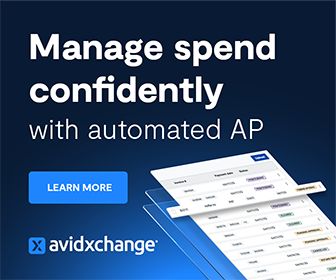Change is the only constant in corporate tax compliance. Each year, rule changes make your finance team’s job more complex, time-consuming, and at times, downright frustrating. If you fail to adapt, this burdensome task will detract from your other responsibilities and expose the organization to regulatory risk.
Fortunately, you can streamline corporate tax compliance by addressing three key pillars of efficiency — technology, processes, and talent. With that in mind, here are the best practices for manipulating each of these efficiency levers to strengthen your compliance posture.
Integrating Tax Management Software
Step one involves equipping your team with the tools they need to succeed. Tax management software offers many benefits, such as centralizing tax-related data, automating calculations, and ensuring accuracy. Here’s how to leverage these tools effectively:
Automate Redundant Work
Tax software automates routine tasks such as data entry, calculations, and report generation. This not only reduces the likelihood of human error but also frees up tax professionals to focus on more strategic aspects of tax planning and compliance. The more you automate, the greater your efficiency gains.
When implementing automation, start with the most tedious and inefficient workflows. As you get accustomed to the software and the way it fits into your day-to-day processes, explore additional opportunities for automation and time savings.
Consolidate Your Data
Disorganized information and documents make reporting a nightmare. Moreover, disparate data increases the likelihood of errors and missed deadlines. Adopting the right software and consolidating your files will provide a single source of truth for reporting and compliance purposes.
Use Advanced Reporting Features
Leading tax software includes advanced analytics capabilities, providing your team with insights into liabilities, potential savings, and risk areas. Customizable reporting tools enable your company to generate comprehensive reports for internal analysis and regulatory submissions.
Additionally, you can use these tools to monitor your compliance posture throughout the year. In turn, you can proactively identify and resolve potential issues before they draw the ire of the IRS.
Staying Up to Speed on Tax Regulations
State and federal tax regulations are frequently modified and revised. Staying apprised of these developments is crucial, especially if your company operates in multiple jurisdictions. Be proactive and implement strategies to monitor and adapt to these changes. Here are a few ways to ensure you never miss an update:
Subscribe to Updates
Subscribe to updates from tax authorities and professional advisory services to help your staff stay informed about relevant tax law changes. Most of the time, regulatory bodies give ample notice about impending changes. Once you find out about a potential rule change, meet with the leadership team and explore how those alterations may impact your business.
If you integrate a robust tax software solution, your platform may automatically integrate regulatory updates as part of its service. Still, it’s important to familiarize your staff with modifications to the tax framework, as the organization (not the software) will ultimately be held responsible for compliance mistakes.
Engage With Tax Advisors
Ideally, you should have an in-house tax professional on your team. If you don’t, periodically check in with a third-party tax advisor to obtain an objective perspective. These experts can provide tailored advice on complex tax issues and emerging regulatory trends.
Even if you are confident in the capabilities of your internal team, it never hurts to obtain some additional insights. Neutral third parties may consider nuances that your staff might overlook.
Invest in Training
The absolute best thing you can do to streamline corporate tax compliance is to upskill your team. Equipping them with the latest tools and tech can be beneficial, but they need to be confident with these solutions. That’s where training comes into play.
Workshops, seminars, and courses on current tax laws are a few excellent options to consider. These trainings foster a culture of continuous learning and adaptability. Investing in your team can also make them feel valued and promote better retention.
Optimizing Your Team and Processes for Efficiency
Streamlining your internal workflows will promote overall efficiency and agility. Here are three ways to eliminate friction from your day-to-day processes:
Define Roles and Responsibilities
Everyone should know what their role is on the accounting team. The goal is to reduce task overlap while also promoting greater collaboration.
Standardize Procedures
Next, create documented policies and checklists for tax compliance tasks. These forms can serve as references and ensure that your tax procedures are standardized across all departments.
Promote Inter-Departmental Coordination
You need everyone working together and sharing information. Delays in the flow of information can lead to missed deadlines and compliance challenges. Conversely, if IT, accounting, legal, and finance teams are all collaborating together seamlessly, maintaining compliance becomes much easier.
The Path Forward
By leveraging technology, fostering a culture of continuous learning, and streamlining internal processes, your business can achieve compliance and gain a competitive advantage through efficient tax management. Be proactive, stay focused, and embrace opportunities to innovate.
Additional Tax Resources
What Controllers Need to Know About the 2023 Changes to Depreciation Rules




